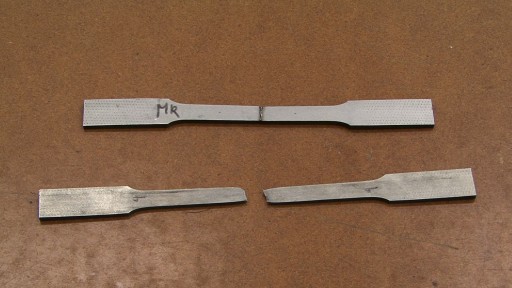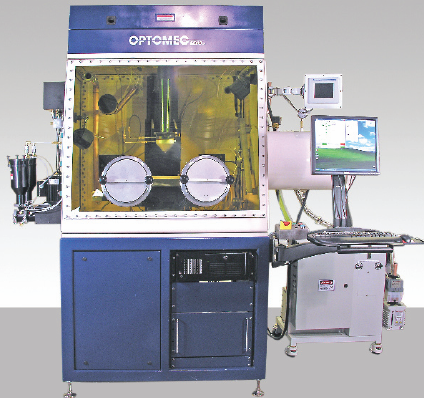What could you make with a 3D printer on the Moon?
November 29, 2012

Neanderthal tools? No, test objects printed from simulated Moon dust. (Credit: Amit Bandyopadhyay/Washington State University)
Not for Amit Bandyopadhyay, professor in the School of Mechanical and Materials Engineering at Washington State University, and colleagues, who recently published a paper in Rapid Prototyping Journal demonstrating how to do just that.
Bandyopadhyay and Susmita Bose, professor in the School of Mechanical and Materials Engineering, are well known researchers in the area of three-dimensional printing, creating bone-like materials for orthopedic implants.
The high expense of space travel limits what space ships have to carry. So a lunar or Martian outpost would have to use materials that are on hand for construction or repairs.

LENS-750 3D printer (credit: Optomec)
That’s where the 3-D fabrication technology might come in. Three-dimensional fabrication technology, also known as additive manufacturing, allows researchers to produce complex three dimensional objects directly from computer-aided design (CAD) models, printing the material layer by layer. The material is heated using a laser to high temperatures and prints out like melting candle wax to a desired shape.
To test the wild idea, NASA researchers provided Bandyopadhyay and Bose with 10 pounds of raw lunar regolith simulant, an imitation moon rock that is used for research purposes.
The WSU researchers were concerned about how the moon rock material, which is made of silicon, aluminum, calcium, iron and magnesium oxides, would melt, but they found it behaved similarly to silica. And they built a few simple shapes.
The researchers are the first to demonstrate the ability to fabricate parts using the moon-like material. They sent their pieces to NASA.
Using additive manufacturing, the material could also be tailored, the researchers say. If you want a stronger building material, for instance, you could perhaps use some moon rock with earth-based additives. The advantage of additive manufacturing is that you can control the composition as well as the geometry,” says Bose.
In the future, the researchers hope to show that the lunar material could be used to do remote repairs — and presumably find a miniaturized version of the industrial-strength LENS-750 3D printer they used.
The research was supported by a $750,000 W.M. Keck Foundation grant.